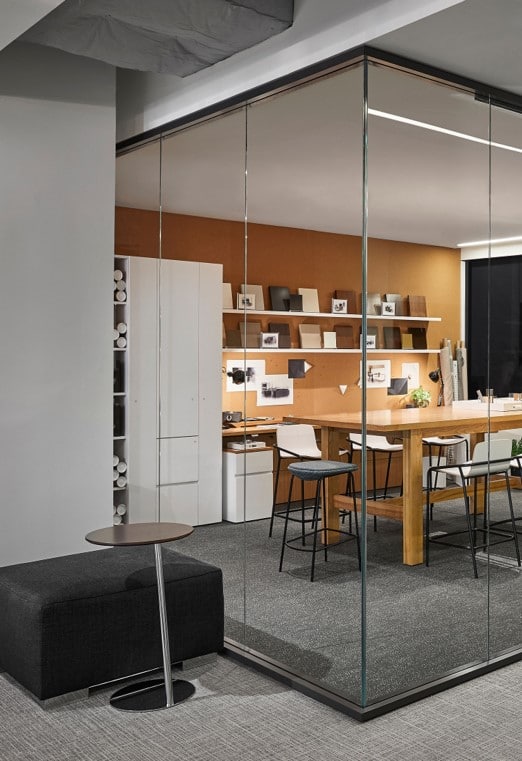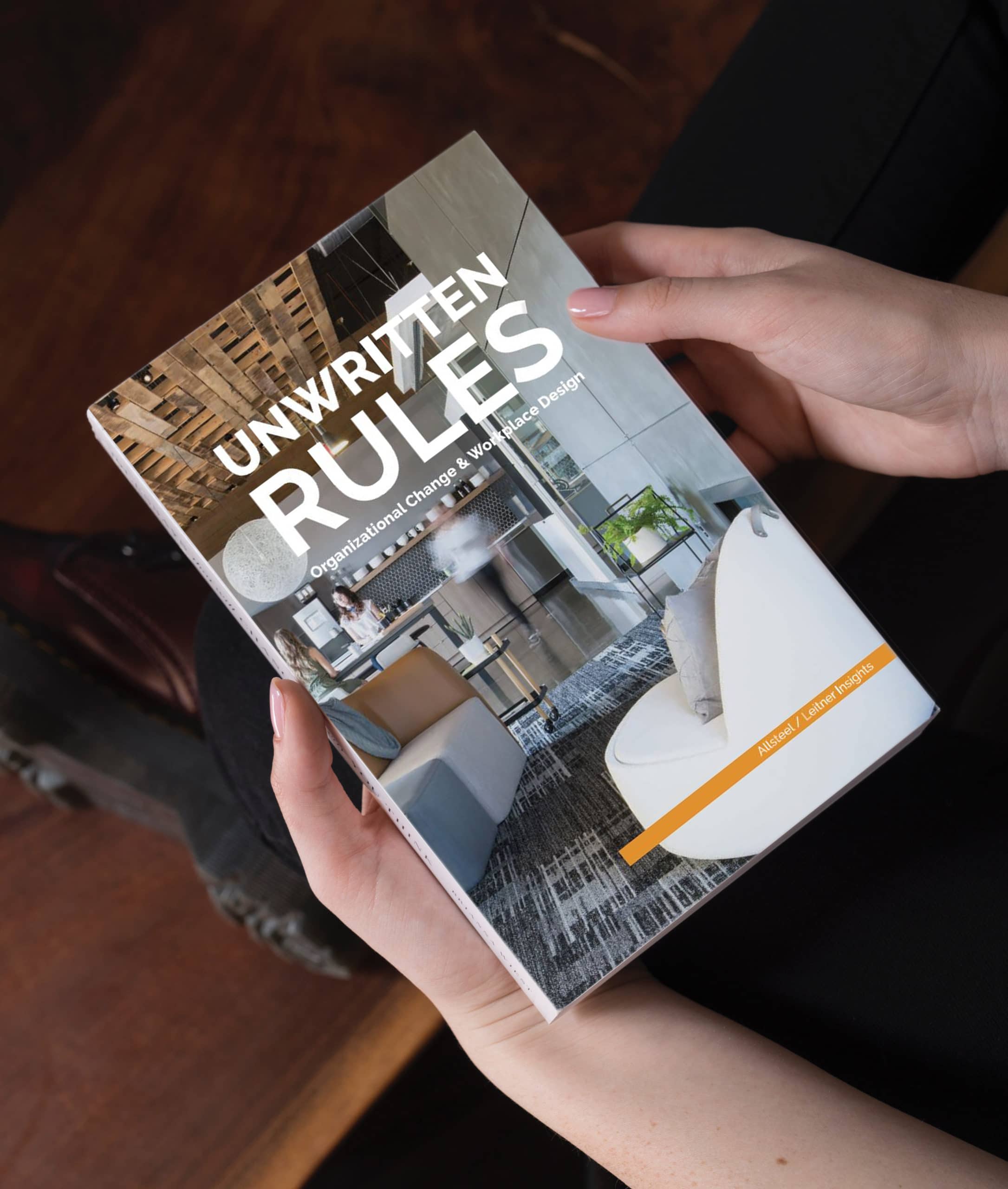Environmental Branding And Modern Office Design:
Modern office design has evolved far beyond the traditional office we used to know.
Furniture manufacturers, such as Allsteel, have made great strides with cleaning up brown sites, using recycled materials, building recyclable furniture, cutting their carbon footprint and using renewable energy. Architects are focusing on sustainable design. The recent introduction of Well Building Standards focuses on creating built environments that nurture occupants while promoting green building practices.

What exactly is ‘environmental branding?’
 This term describes a multitude of design elements making their appearance in the hippest, hottest work spaces of the decade. Included under this banner would be everything from living walls with integrated brand messages and logos, to inclusion of plants in the office for air purification. It also includes elements such as natural light access, passive solar, clean water and fresh air.
This term describes a multitude of design elements making their appearance in the hippest, hottest work spaces of the decade. Included under this banner would be everything from living walls with integrated brand messages and logos, to inclusion of plants in the office for air purification. It also includes elements such as natural light access, passive solar, clean water and fresh air.
Some organizations are adding an extra level of biodiversity to their environmental branding design by incorporating bird nesting boxes and insect hotels in outdoor living walls.
Green roofs are another, slightly less popular, choice for organizations that are adopting environmental branding.
Other popular, often unseen facets pursued by many companies is reduction in packaging waste, water and electricity use. Solar power is a practical choice for many, especially in urban environments where wind power generation is not an option.
What are the benefits of environmental branding?
There are a number of significant benefits, some of which include:
 – The message it communicates to employees, clients, vendors, suppliers and the general public. The message is that the organization is concerned with more than just profits. It demonstrates sensitivity to employee well being as well as a concern for the environment, both built and natural. By incorporating environmental branding on the exterior of the work space, it also beautifies and adds value to the public areas abutting the building. This obviously has a positive impact on the community as a whole.
– The message it communicates to employees, clients, vendors, suppliers and the general public. The message is that the organization is concerned with more than just profits. It demonstrates sensitivity to employee well being as well as a concern for the environment, both built and natural. By incorporating environmental branding on the exterior of the work space, it also beautifies and adds value to the public areas abutting the building. This obviously has a positive impact on the community as a whole.
– Environmental branding has many intangible benefits including contributing to job satisfaction, brand /company loyalty and morale.
– It helps with sound and temperature control, air quality and aesthetics – all of which benefit productivity and contribute to lowering stress levels, which, in turn lowers absenteeism and health related costs.
– Environmental branding usually increases property values and can contribute to the protection of the structure when deployed on the exterior of a building.
Will the environmental branding trend continue?
Environmental branding is here to stay – at least for the foreseeable future. As time goes by, we will see more organizations opting for a display of environmental consciousness with their work place design.
It is becoming an expected philosophy. As Millennials form the majority of the work force, with Gen Z following in their footsteps, the desire for authenticity and environmental stewardship is at an all time high.
They expect more than a sophisticated and targeted corporate identity. Corporate collateral and media kits are not enough to attract and retain high quality employees and clients. A carefully worded tag line declaring the organization’s commitment to preserving the environment and caring for its people and clients carries little weight unless there is tangible, visible proof to that effect.
Bird Street: London’s first sustainable smart street featuring futuristic sustainability technologies with paving that generates electricity, air purification by living wall and piped bird song.

Patagonia New York: Their ‘anti-growth’ strategy is a serious commitment to encouraging consumers to reduce unnecessary consumption, even if it means that people don’t buy their products when they don’t really need them. They prefer repairing rather than replacing products. Their wet suits are made of natural rubber rather than neoprene and they recycle plastic bottles into parkas.

Liberty Mutual St. James Avenue Garden, Boston MA: Boasts very attractive, multi-dimensional green walls and trees in their outdoor spaces.




